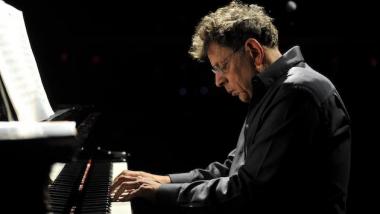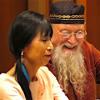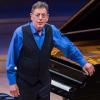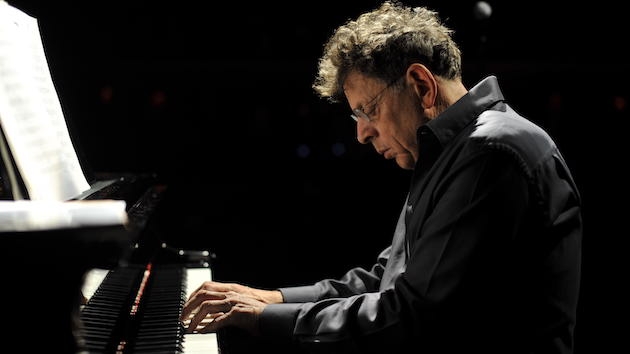
Philip Glass is a fascinating headliner for a piano concert. You may have heard the clichés about his piano chops: uneven execution, wrong notes, weaving tempi. Glass’s SFJAZZ performance at Miner Auditorium on Saturday night featured all those things, as well as some concerning moments where he seemed to have lost his place in the piece.
But the history of music provides plenty of examples of performers whose occasional mistakes were unable to dim their musicality. It seems to me that Glass fits into this category.
In Metamorphosis Two and “Etude No. 2,” Glass organically eased in and out of his repeating figures, his weaving tempi often functioned effectively as expressive rubato, and even the moments of recovering from loss of place in the piece resulted in affecting interpretations and interesting new angles on these widely performed and recorded pieces. When the music poses no technical obstacles, such as the bell-like, upper register octaves in Metamorphosis Two and the opening single-voice line of “Etude No. 2,” Glass performs with a touching elegance and warmth.
Perhaps you have to be a Glass fan to hear the composer perform his own piano compositions and have a net positive takeaway. Pianist Anton Batagov’s American premiere performance of Distant Figure, Passacaglia for Piano required no such prior exposure.
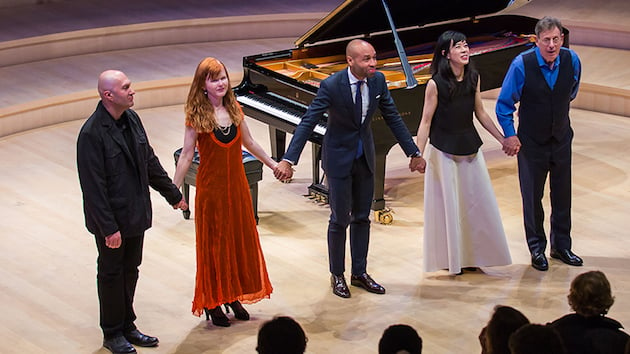
Batagov’s performance was revelatory for me. As he started the heartbeat-like, two-note, left hand pattern that opens so many Glass keyboard works, as his right hand began overlaying a three-note rhythmic pattern, when he struck low register notes, I was moved to admit that Glass’s detractors are right to say that the music is formulaic. But I judge the formulae positively. They can be beautiful: the variables change slightly in each piece and there are new, unexpected positions for well-loved quantities.
The harmonic progression in Distant Figure, for example, began in an expected Glassian manner but melted into a long phrase that made my heart ease the way Schubert’s harmonic vocabulary so often does. Batagov’s performance made such elements crystalline: rather than fight the dry room and piano acoustics, he played Glass as if it were Morton Feldman, with a quiet, perfect voicing and shocking dynamic control that made me lean in, even when Glass deployed some variables I can do without.
The most profound revelation for me came when Batagov approached the end of the piece, returning to the moving opening progression with such stillness that the auditorium’s HVAC system served as an oddly warm, rich accompaniment. In the final moments of the piece, Glass gives ever shorter bits of that long progression, letting the piece evaporate. Batagov’s sensitive timing, voicing, and dynamics made it breathtaking.
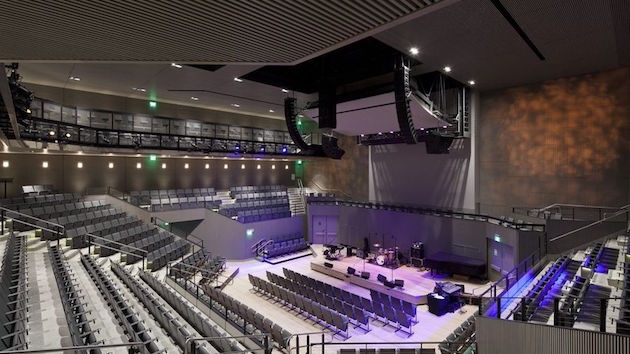
Glass’s musical formulae made Aaron Diehl’s jazz interpretations of String Quartet No. 4, movement 2 and “Etude No. 16” an exciting experiment. Using Glass’s basic modules, Diehl’s improvisations stayed relatively close to the score, introduced a few interesting rhythms, and, for Glass advocates, provided a fun new listening experience for well-known pieces, making a new path through known territory. And the audience loved it: a standing ovation and perhaps the loudest applause of the evening.
I am eager to hear more of this and hear Diehl push the musical material further away from Glass’s written compositions, push it into something more abstract, even dissonant. It is hard to imagine a better candidate for such an enterprise: Diehl is an extraordinarily sensitive musician, with great jazz chops, and an intimate knowledge of Glass’s works.
Glass’s musical openness, Batagov’s dedicated interpretations, and Diehl’s exciting new path made for a rewarding evening. If you weren’t able to make one of the two performances, look for Batagov’s recordings and keep an eye out for Diehl’s next improvisation session.

